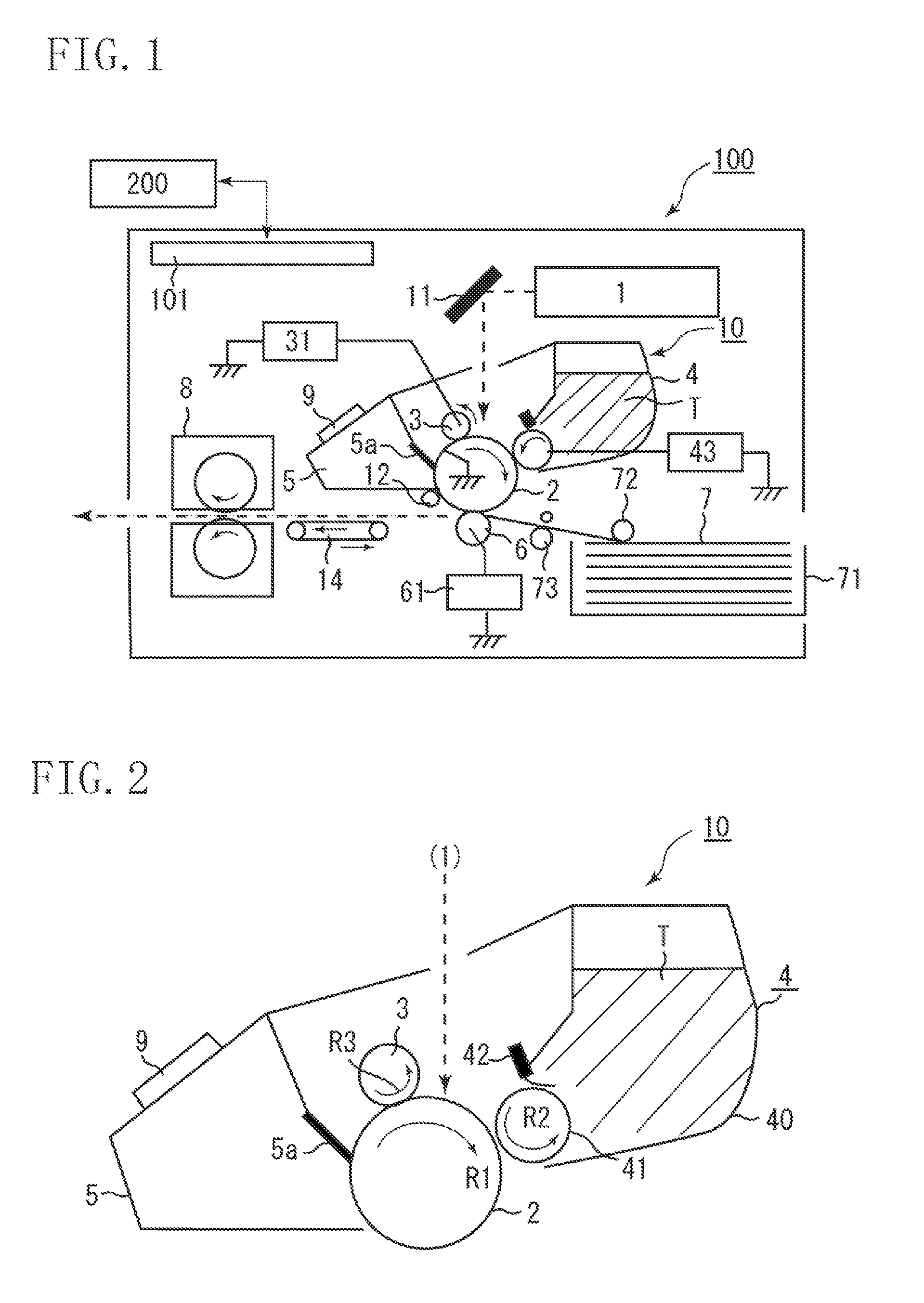Image forming apparatus
a technology of image forming and forming drums, applied in the direction of electrographic process apparatus, instruments, optics, etc., can solve the problems of increasing the abrasion loss the surface potential of the photosensitive drum may not be uniform, and the life of the photosensitive drum is short, so as to reduce the scattering of toner and achieve the effect of appropriate image quality
- Summary
- Abstract
- Description
- Claims
- Application Information
AI Technical Summary
Benefits of technology
Problems solved by technology
Method used
Image
Examples
Embodiment Construction
[0032]Various exemplary embodiments, features, and aspects of the invention will be described in detail below with reference to the drawings.
[0033]FIG. 1 illustrates a configuration of an image forming apparatus according to a first exemplary embodiment of the present invention.
[0034]The image forming apparatus according to the present exemplary embodiment is an electrophotographic printer configured to perform a series of image forming processes including charging, exposing, developing, transferring, and cleaning with respect to a rotatable electrophotographic photosensitive member to form an image on a transfer material.
[0035]An image is formed on a transfer material (recording medium). The image corresponds to an electric image signal input from an external host apparatus 200, such as a personal computer, to a control device (engine controller) 101 of an image forming apparatus 100. The control device 101 exchanges various information with the external host apparatus 200 and make...
PUM
 Login to View More
Login to View More Abstract
Description
Claims
Application Information
 Login to View More
Login to View More - R&D
- Intellectual Property
- Life Sciences
- Materials
- Tech Scout
- Unparalleled Data Quality
- Higher Quality Content
- 60% Fewer Hallucinations
Browse by: Latest US Patents, China's latest patents, Technical Efficacy Thesaurus, Application Domain, Technology Topic, Popular Technical Reports.
© 2025 PatSnap. All rights reserved.Legal|Privacy policy|Modern Slavery Act Transparency Statement|Sitemap|About US| Contact US: help@patsnap.com



